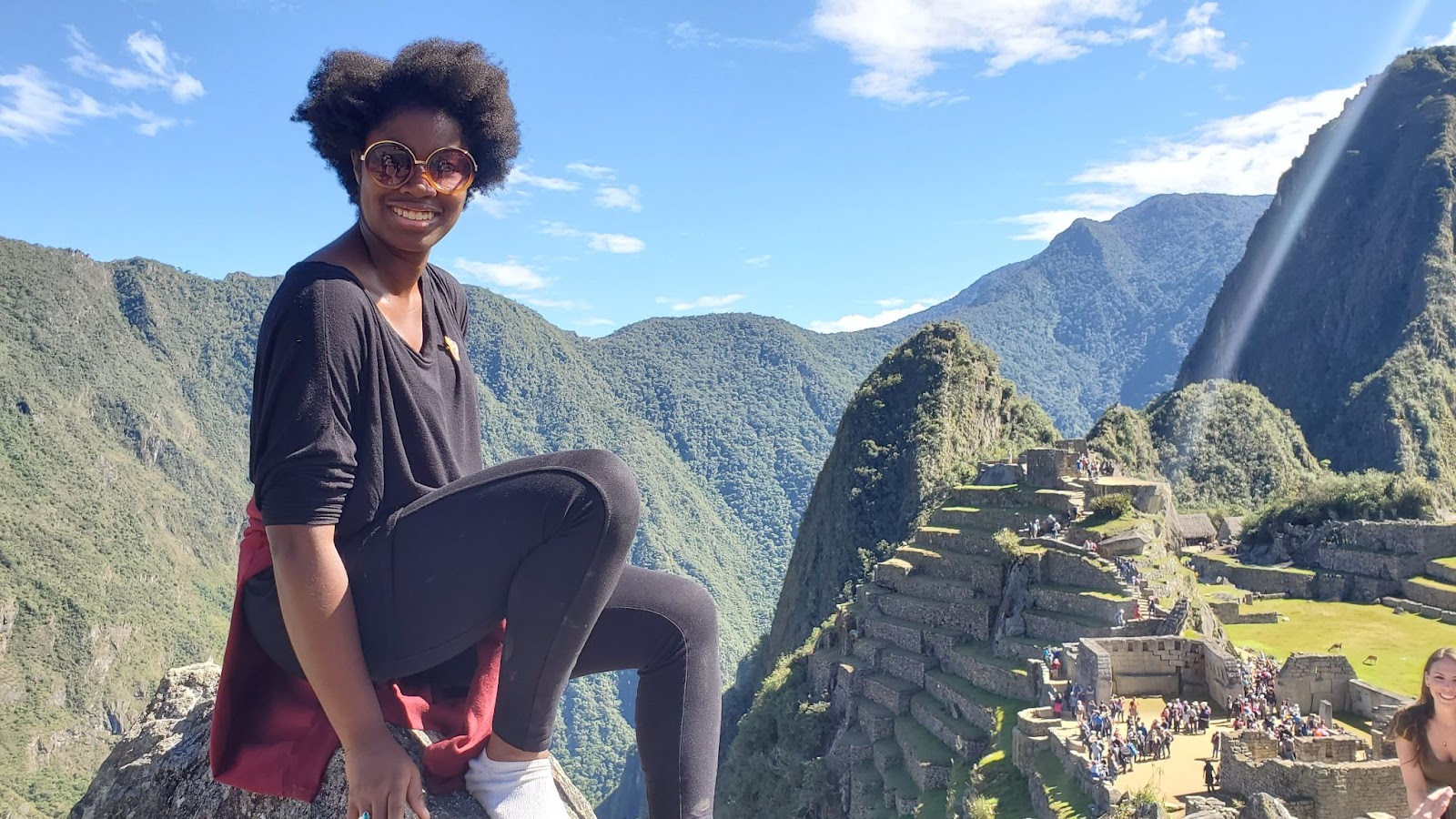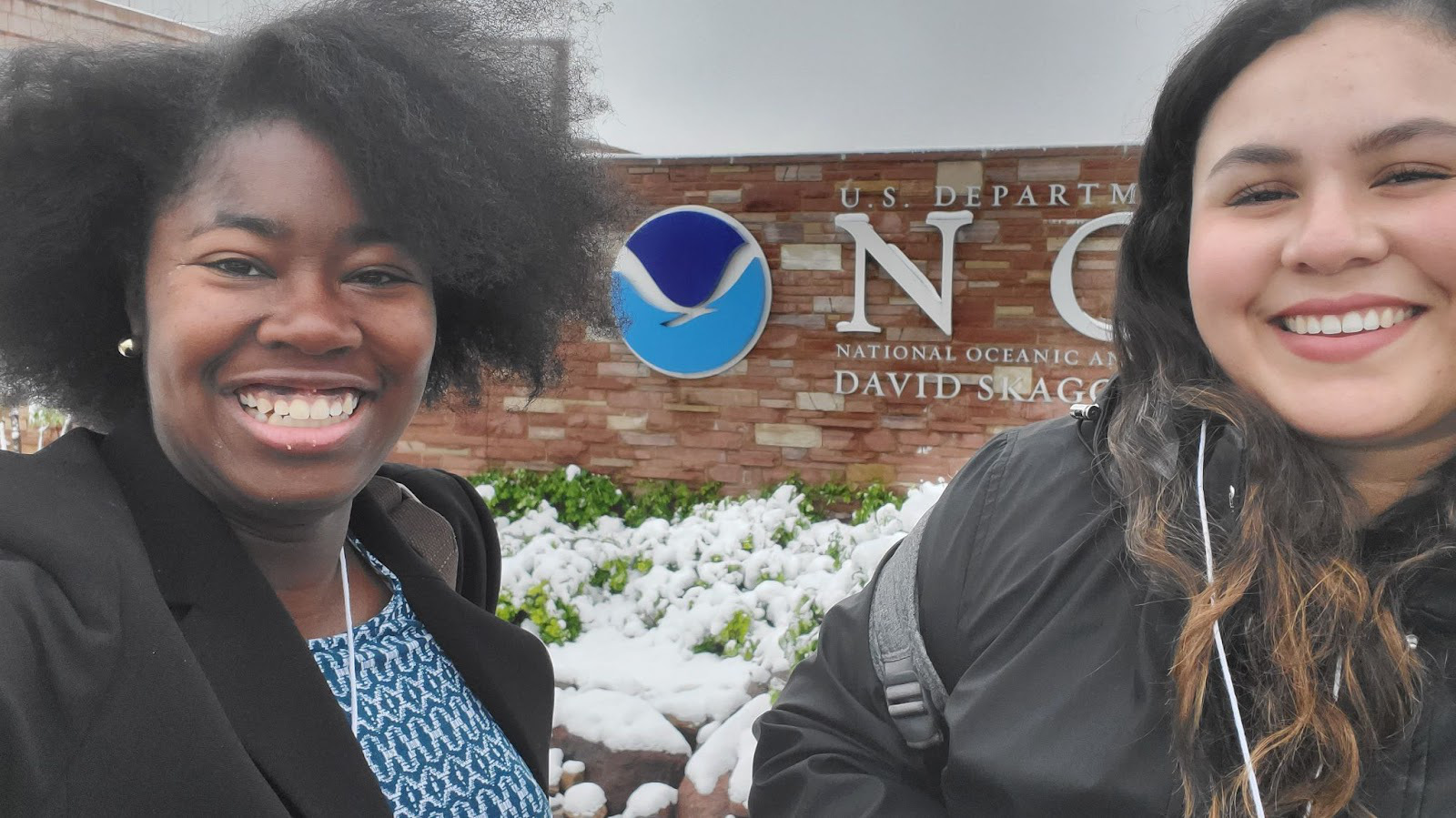Breahna Gillespie: Deep in love with ecology while researching the carbon cycle

Breahna Gillespie is our intern working with the Carbon Cycle and Greenhouse Gas Division in 2021 summer. She earned her Bachelor of Science degree in Environmental Science from Spelman College and is currently finishing up her Ph.D. in Ecology at the University of California, Davis. Since 2017, she has been a NOAA-Crest Scholar. She also presented at NOAA Global Monitoring Annual Conference in 2019.
For her internship, she works closely with Dr. Lori Bruhwiler to understand the impacts of drought-vegetation feedback on the carbon cycle. Advancing the understanding of processes contributing to the carbon cycle will help us better predict future climate change.
Our conversation follows.
-
When did you become interested in Ecology and climate science? Was there a singular experience that drew you into the field?
When I was little, I loved collecting plants and drying them on the window shelf. I was always amazed by the natural world around me. That started a passion in me, which has persisted through my academic career.
When I was in high school, I knew that I wanted to discover and learn, but I wasn’t sure as to how I could accomplish this. It was on a trip to Costa Rica with my AP Biology class that my love for Ecology crystallized.
When we were in Costa Rica, we worked with the local community to protect the tropical rain forests and to study and appreciate the organisms living there. From the leaf-cutter ants in the rain forest to the sea turtles on the beach, I knew that ecology was the field I wanted to pursue.
My undergraduate has a small science program with only 4-5 science majors. I chose Environmental Science because I was excited to work with communities in pursuit of sustainable goals. I got to learn a lot more about climate science through my major and become eager to work in this realm to create actual impacts.
-
You are in the last year of your Ph.D. at the University of California, Davis. What projects did you work on for your Ph.D.?
For my dissertation, I have three projects. The first looks at how fog influences a region typically characterized by drought. This is one of my favorite projects because it was born out of my own observations when I was collecting measurements for another project. I noticed fog coalescing on the leaves of some plants but not others. This encouraged me to ask how fog might influence water-stressed plants? Not only does fog reflect light and keep temperatures cool, but it also increases the relative humidity and prevents plants from losing as much water as they would in clear conditions. My project looks to examine these water-related processes in plants when fog is present.
My second project examines the aboveground biomass of shrubs at different ages. This is an interesting topic because it is closely related to wildfire management practices. In the past, some researchers advocated for controlled chaparral burning to avoid large wildfires in the future. Frequent burnings have not shown a decrease in the fire frequency intervals. Also, if older shrubs contain more woody biomass, burning these shrubs can release a large amount of carbon that is resistant to microbial decomposition. Given these considerations, protecting the older chaparral shrubs from burning might be a better practice for wildfire management.
My third project measures the contribution of plant transpiration to total forest evapotranspiration. The eddy covariance towers in the forest measure not only basic climatic variables like temperature and humidity but also measures carbon, water, and energy fluxes. These measurements capture the transpiration of the whole forest ecosystem, including plants, animals, and soils. My project looks to measure how much individual plants transpire and compare it to the total forest evapotranspiration.

-
How do your research and expertise combine with your summer work at Global Monitoring Laboratory?
My work looks at the impact of vegetation on a landscape scale and evaluates how drought conditions might impact their assimilation of carbon. The modeling project at Global Monitoring Laboratory predicts how drought conditions will impact carbon assimilation on a larger synoptic scale.
Plants take in carbon dioxide through photosynthesis; under drought conditions, plants would photosynthesize less and increase carbon dioxide emissions, further contributing to a warmer climate and longer drought periods.
Understanding plant processes can help evaluate how drought might influence the carbon emissions from chaparral shrubs and better predict future climate change.
-
You are a very active member of your community and have experience in community service, science outreach, and local conservation. What you enjoy most about these experiences and how would you tie them into your future career?
I really enjoy working with community members and working together to find sustainable solutions. I want to talk with stakeholders and encourage them to see the actions we can do to combat climate change. I believe that climate change needs grassroots movements and to do that, science outreach is necessary.
Since 1905, the National Audubon Society organization has been dedicated to the conservation of birds and their habitats. I have worked with them and often volunteered at the Nature Center and talked with people from all different types of backgrounds and perspectives about conservation practices.

-
How did you learn about the NOAA Experiential Research and Training Opportunities (NERTO) program?
I first heard about the program from my advisor, who worked with NOAA Education Partnership Program before. I didn’t think that I would be interested in the program because of my focus on plants. I am glad that I am a part of the program and it has turned out to be a great experience.
-
Where do you see yourself after this internship? How would this internship help you on your career path?
I want to use my scientific knowledge to provide public services and promote grassroots movements combating climate change. My summer internship will be informative and help me understand more about the governmental services at NOAA. I also want to build professional relationships through my internship.
-
Do you have any advice for future applicants?
So far, I have had a great experience within the NERTO program and have had amazing opportunities to network. Depending on the project and your mentor, you might be able to do research at unique locations.
One of the common misconceptions from my undergraduate studies is that majors are distinct from one another. There are so many possibilities to do what you truly want to do if you look!
